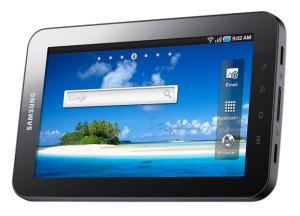
The Samsung Galaxy Tab might be the first Android tablet to seriously take on the Apple iPad juggernaut—but there are signs that some consumers are throwing the devices under the wheels. According to a point-of-sale survey conducted by ITG Investment Research, as many as 16 percent of U.S. consumers who purchased a Samsung Galaxy Tab device have returned it. According to ITG’s estimates, the return rate for Galaxy Tabs was around 13 percent through December, and that number has increased as end-of-year holiday purchases are returned, reaching 16 percent for the first two weeks of January.
Although a return rate of 16 percent is not unprecedented in the mobile or consumer electronics industry—the BlackBerry Storm had a much higher return rate, and failure rates on early versions of Microsoft’s Xbox 360 fell into about the same range—it doesn’t compare very favorably with the iPad, which has return rates around 2 percent.
The ITG study looked at nearly 6,000 wireless retailers in the United States, and comes after Samsung’s admission that it’s publicized sales figures for the Galaxy Tab consisted of devices shipped, not sold to consumers. The company characterized Galaxy Tab sales as lower than they’d hoped.
The Galaxy Tab runs Android 2.2 “Froyo.” Google has repeatedly insisted that Android 2.2 was designed for smartphones, rather than tablets. The upcoming Android 3.0 “Honeycomb” is engineered specifically with tablet devices in mind. There has been no official word from Samsung whether it will support Honeycomb on the existing Galaxy Tab.
Editors' Recommendations
- Every Samsung gadget we still expect in 2024
- Samsung Galaxy Ring: news, rumored price, release date, and more
- Flash sale gets you this iPad Mini-sized Samsung tablet for $99
- Best Samsung Galaxy Z Flip 5 deals: Get the foldable for free
- The 20 best Samsung Galaxy Watch faces you should be using


